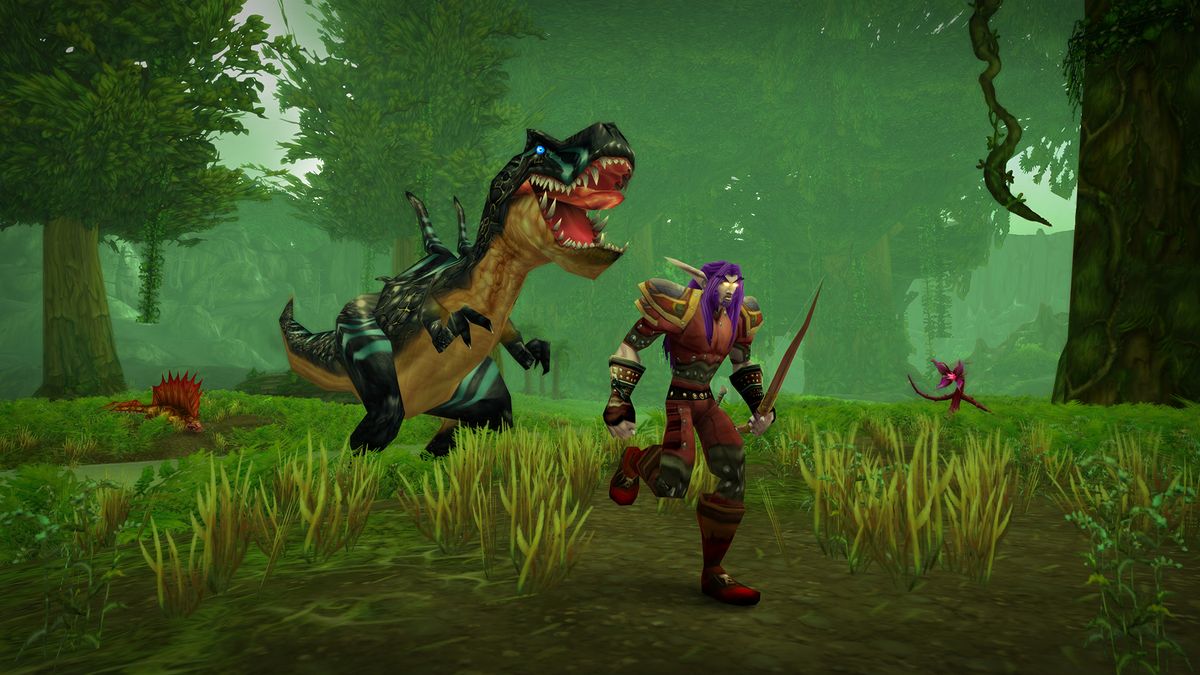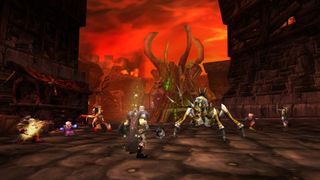World of Warcraft Classic already has one of the nicest communities in gaming
WoW Classic's romanticised community is the best thing about it

Every time I log into World of Warcraft Classic, a notification pops up with news of more in-game mail that's made its way to my inbox. Upon heading to Stormwind to retrieve the post from the nearest collection point (because video games), the received package usually contains a kindly worded letter from a player I had spontaneously teamed up with the day before, often bundled with some sort of valuable item presented as a token of their gratitude. A handful of linen, perhaps (since they’ve remembered I'm a tailor by profession), or a new piece of armour that they've fashioned specifically for me.
It's not the only story of goodwill from my short but rapidly accelerating time in the Azeroth of old, either. Guild members regularly offer to make and send new storage-expanding backpacks to my mailbox for free. Ask a question in the local area chat, and chances are three people will whisper the answer back within seconds. One friendly Dwarf even offered to escort me all the way from Elwynn Forest to Loch Modan, after warning that the journey can often be perilous (and quite boring) when ventured alone.
And I'm sure, by now, you've seen the pictures of hundreds of players forming orderly queues on the day of Classic’s release, lined up one after another to give everybody a fair chance at killing a perpetually respawning boss, in a perfect image of the WoW community's spirit of collective action in the face of Blizzard's infamous launch day woes.
No player left behind

The players in World of Warcraft Classic, at least at present, are some of the nicest and most helpful in-game acquaintances I've ever had the pleasure of interacting with, and certainly a lot more welcoming than the high-level adventurers you'll find in the modern version of Blizzard's titanic MMO.
That’s all well and good, but it is somewhat surreal to see, not to mention confusing. Why is everyone acting so friendly across Azeroth’s old-school continents? And, more importantly, how long can this climate of good sportsmanship possibly last?
Answering the first question is easy, albeit somewhat long-winded. Compared to the 15 years in which World of Warcraft's user base has had time to stratify and then consolidate into groups of tight knit guilds and staunchly independent solo players (the majority of whom are max level), Classic returns everyone back to equal footing, not least in a far more difficult game that demands co-operation as a requisite for success.

Parties band and disperse faster than you can type "LFG" in Classic, as players team up to quicken their questing progress, take down a particularly tough boss, or merely escape enemy-ridden areas with the help of a few extra hands. You cooperate in Classic partly because you have to, then, but it never feels like a chore, since everyone else is just as eager to party up as you are for the exact same reason.
Sign up to the 12DOVE Newsletter
Weekly digests, tales from the communities you love, and more
This, if you'll pardon the tangent to international relations, is essentially Game Theory in action. The conditions of interaction in Classic are presently positive-sum, in which every person who partakes in a co-operative endeavour will advantage from the collaboration; be it in the form of an easier grind, access to raid-specific loot, or collective security from Azeroth's threats.
That positive-sum game is barely present in modern day WoW by comparison, since the obfuscation and challenge of Classic has long been diluted, making it easy for players to chart their own paths as lone wolves, and providing little to no material incentive to help anyone else out just for the sake of it, since in-game friends are far less valuable than they once used to be.
Dream team

"You cooperate in Classic partly because you have to, but it never feels like a chore."
Of course, as variations in player progress continue to deviate over time in Classic (some users have already hit 60, while my Gnome Warlock is still trundling along at a level 15), those positive-sum conditions will eventually, inevitably deteriorate in a similar fashion. Will players really be willing to help each other out so eagerly when the honeymoon buzz of Classic has died down, and they're dispersed more evenly across zones, levels, and in their relationship with the game itself?
That's what worries me about Classic. While it's been lovely to soak up and enjoy the congenial atmosphere for the last week or so since release (although I can only speak for the Alliance), I can't help but shake the lingering feeling that this zeitgeist of conscious collectivism is a) temporary, and b) somewhat illusory, in that self-interest is still at the heart of each player's collaborative behaviour, as teaming up is merely the best way to achieve that interest during these early days of Classic's life cycle.
One day, not too far from now, I'll log back into Classic, and there won't be any mail waiting for me in my inbox. That's depressing, but – as the state of the original World of Warcraft goes to show – it's also inevitable. Once we're all out of the same boat, it's every man, woman, and Orc for themselves.
Check out our best WoW Classic tips for surviving old school Azeroth, or watch our Dialogue Options below for a deeper exploration of open world games.
I'm GamesRadar's Features Writer, which makes me responsible for gracing the internet with as many of my words as possible, including reviews, previews, interviews, and more. Lucky internet!
Most Popular


